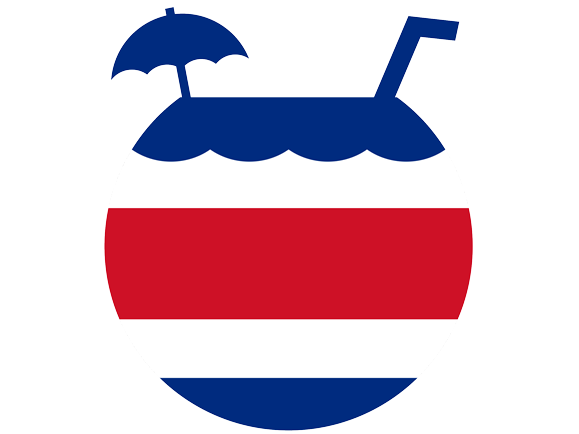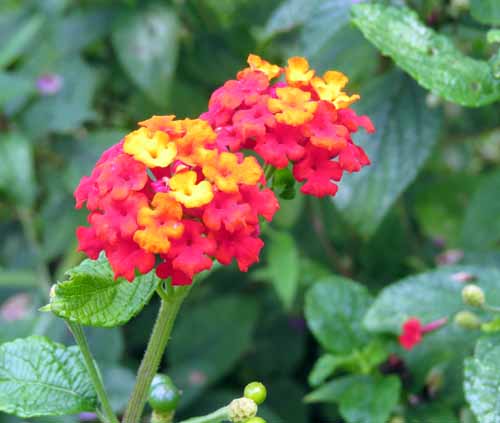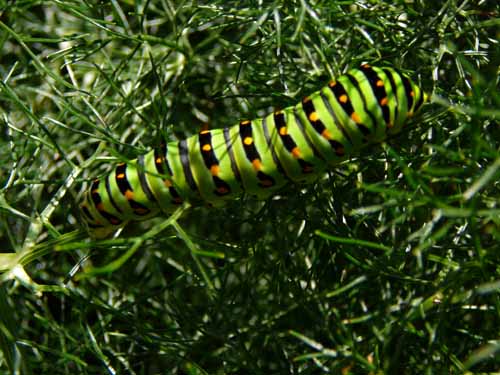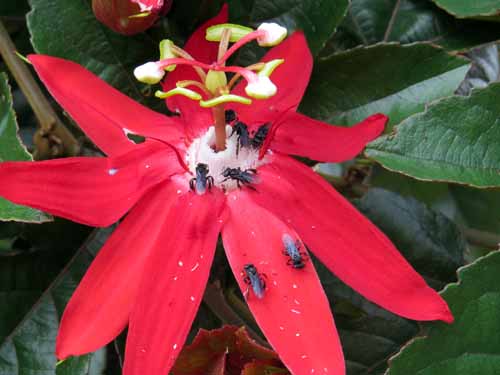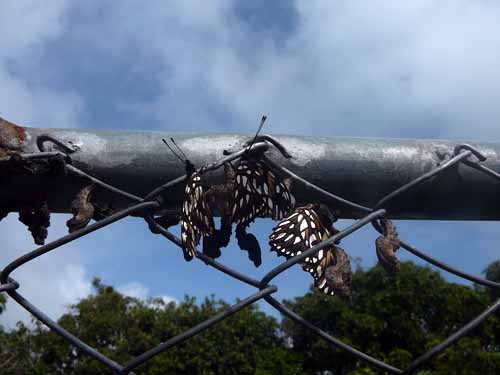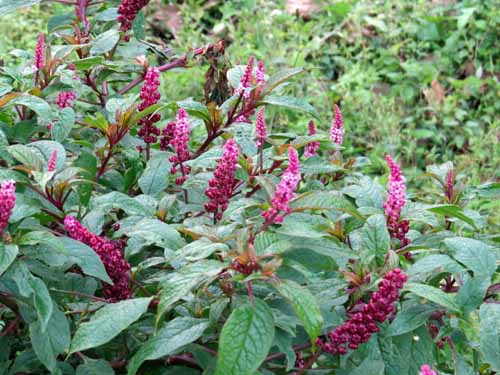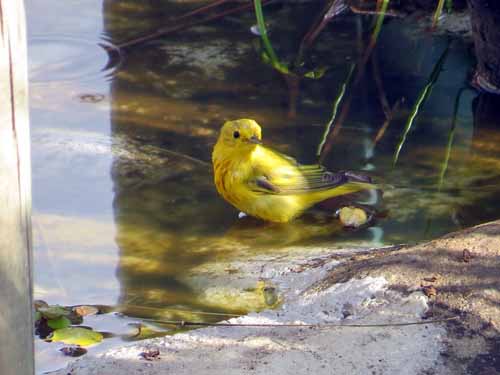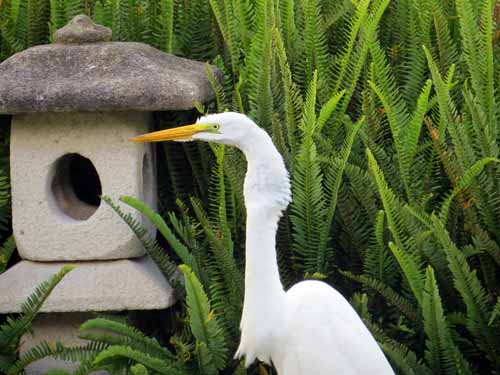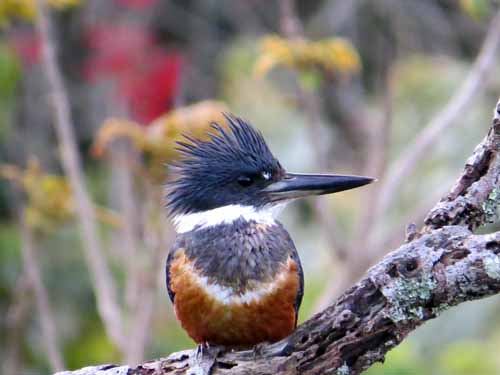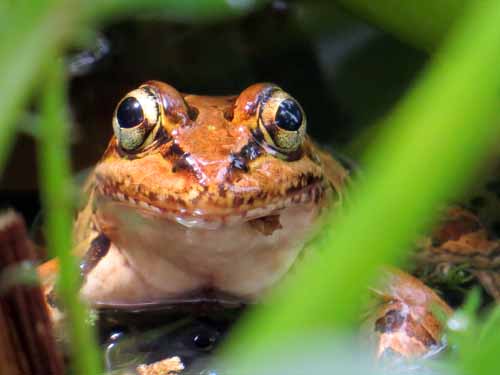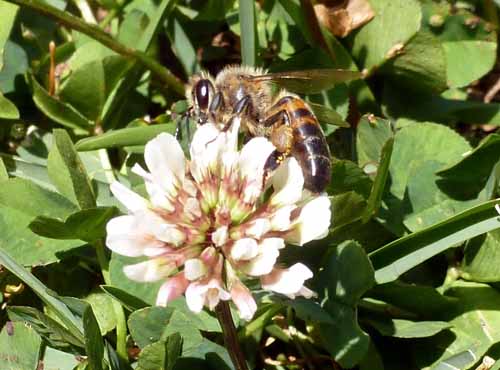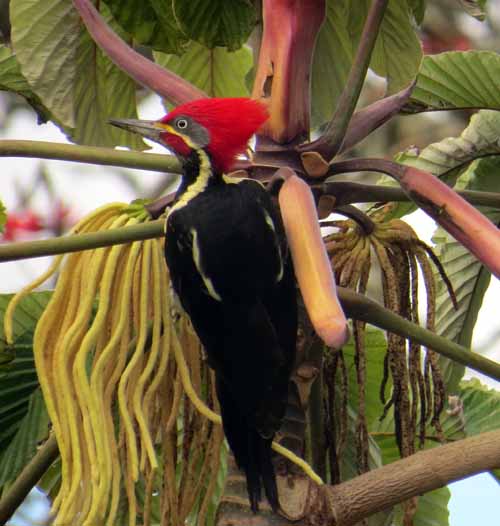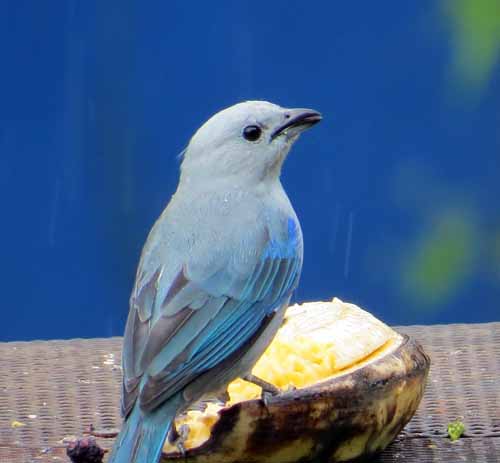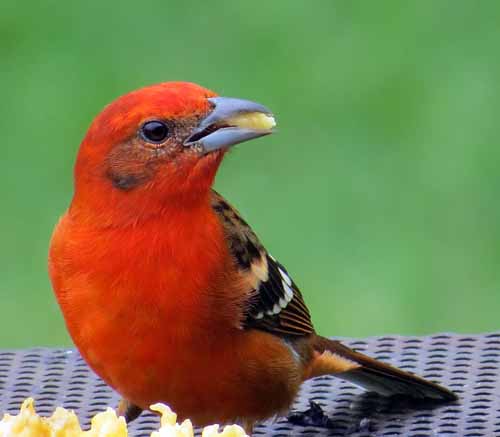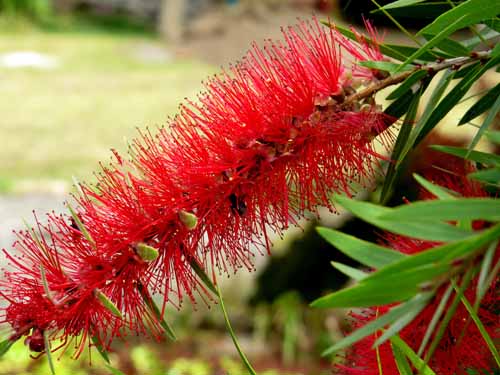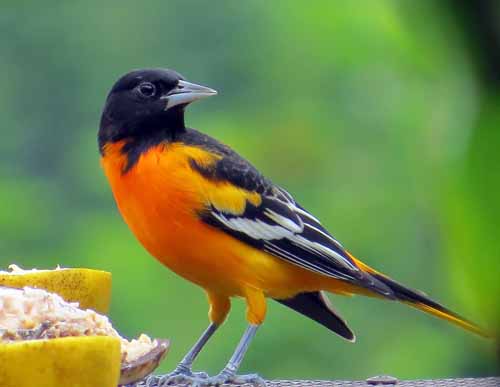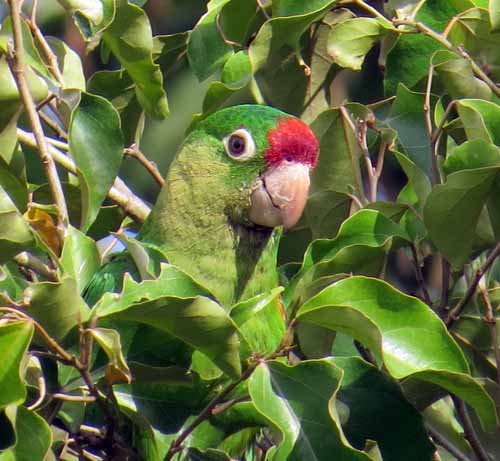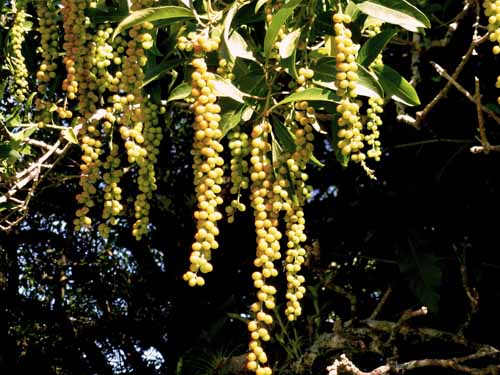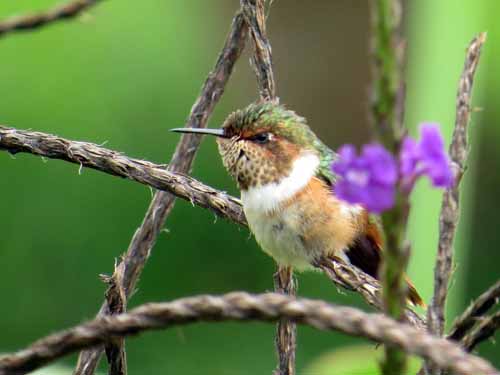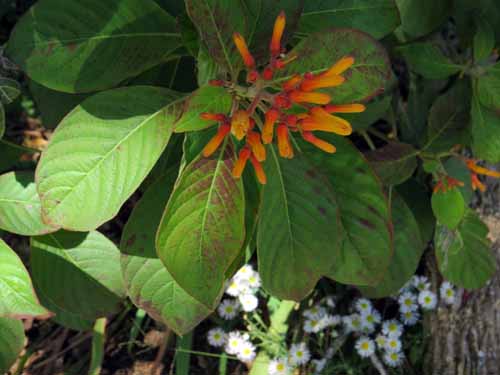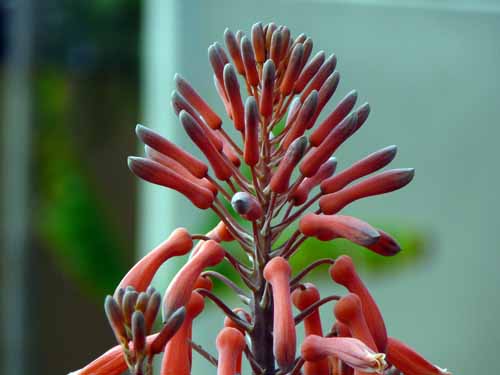Life in CR
Gardening in Costa Rica with Steve – Gardening for Wildlife
- By in Blog
![]() When we began gardening many years ago, we also started feeding wild birds at about the same time. It wasn’t long before we realized the two activities were interconnected. We observed the birds’ habits, learned what things were beneficial for them and began modifying our garden accordingly. Later we became attuned to other types of wildlife, including butterflies, bees, squirrels, raccoons, snakes, bats, and many other creatures.
When we began gardening many years ago, we also started feeding wild birds at about the same time. It wasn’t long before we realized the two activities were interconnected. We observed the birds’ habits, learned what things were beneficial for them and began modifying our garden accordingly. Later we became attuned to other types of wildlife, including butterflies, bees, squirrels, raccoons, snakes, bats, and many other creatures.  This opened up a whole new world to us. It was educational, entertaining, and made us feel part of the natural world around us. We eventually realized that many people were going through this life change at the same time we were. For example, for many years the staff at the South Carolina Botanical Garden, which was just a mile from our home, had offered a series of courses to teach people to become Master Gardeners. About a year before we left they began a second set of courses to teach people to become Master Naturalists.
This opened up a whole new world to us. It was educational, entertaining, and made us feel part of the natural world around us. We eventually realized that many people were going through this life change at the same time we were. For example, for many years the staff at the South Carolina Botanical Garden, which was just a mile from our home, had offered a series of courses to teach people to become Master Gardeners. About a year before we left they began a second set of courses to teach people to become Master Naturalists.
Gardening for wildlife is much more than just putting out food for birds. The next logical step is to grow plants that provide food (such as nuts, fruit and seeds) for birds and all types of animals and insects. After you take this second step you will eventually come to realize that the key is to create a habitat that is wildlife friendly in as many ways as possible.
They all go together. To illustrate, when we put up our bird feeder in Costa Rica our yard was bare of trees and shrubs. Not many birds came to the feeder. After a few years when trees and shrubs had grown up we got a lot more birds. What we noticed was that birds approach the feeder very cautiously because they are worried about predators. They will sit and hide in the trees and shrubs first while they check out the area. If they are unable to do this, many birds will not come to the feeder.
In South Carolina we put out mostly seeds and nuts, plus suet in winter. These attracted many different kinds of birds. Here in Costa Rica we put out fruit (mainly semi-ripe or ripe plantains and papaya). There are many birds here that are fruit and nectar eaters. In fact, we’ve counted 25 different species that come to our feeder. You can also put out cracked corn and cooked rice, which will attract rufous-collared sparrows (comemaiz), pigeons and doves and a few other kinds of birds.
In South Carolina we had a nectar feeder for the ruby-throated hummingbirds. When we moved here we did the same thing because we had no flowers. We noticed the feeders attracted rufous-tailed hummingbirds. They are very territorial and drove off all the other kinds of hummers. After three years we had lots of flowers and so took down the feeders. The return of the other hummers has been a very slow process. My advice is to plant lots of hummingbird-friendly flowers and to not put up feeders.
When we arrived in Costa Rica in 2009 we set out immediately to garden for wildlife. We had a lot to learn because so many plants and animals are different here, and we are still learning (and, of course, we will never stop learning). But we were surprised to find some of the same plants here, and some of the same or similar animals that naturally went with them.
Here is a list of plants (and the insects or birds they attract) we’ve grown both in the US and Costa Rica. The first four on the list you can find at local viveros.
- Lantana (cinco negritos) – attracts butterflies (especially skippers) and bees
- Fennel (hinojo) – attracts black swallowtail butterflies
- Passion flower (pasiflora) – in South Carolina we had a purple variety (Passiflora incarnata) that attracted gulf frittilary butterflies. There are many kinds of passion flowers in Costa Rica, but the one that hosts the gulf frittilary is the red variety (Passiflora racemosa).
- Moonflower – attracts hawk moths
- Pokeweed – attracts many kinds of fruit-eating birds. It grows wild and if there are some growing in your neighborhood you can pick the berries and plant them. The variety here looks a little different, but you can identify it by its red stems and purple berries.
- Angel’s trumpet (reina de la noche or trompeta; scientific name is Brugmansia) – attracts honeybees, stingless bees and bats
- Morning glory (churistate, campanita) – attracts bees, butterflies, and hummingbirds
- Butterfly weed (Asclepias tuberosa) – attracts butterflies
WATER
We have two types of water features in our yard: glass birdbaths and a large pond with a waterfall. Each type seems to attract different kinds of wildlife. The birdbaths sit on metal legs near the bird feeder. They are visited daily by clay-colored thrushes who both drink and bathe in the water. They are sometimes used by white-eared ground sparrows, great kiskadees, rufous-collared sparrows, and grayish saltators. By the way, if you have a birdbath it should be either glazed or painted ceramic, glass, or metal – they have smooth surfaces and are easy to clean (they should be emptied, cleaned, and refilled daily). We once had a concrete birdbath and it was almost impossible to clean.
The pond attracts mainly great kiskadees and tropical kingbirds, but sometimes doves, warblers, rufous-collared sparrows, tanagers, great egrets and kingfishers.
The kiskadees perch on nearby structures or branches and dive into the water to catch small fish (you will need fish to prevent mosquitoes from breeding). Tropical kingbirds skim across the surface and appear to take sips of water. Egrets and kingfishers eat the larger fish. The other birds bathe around the edges of the pond.
The pond also attracts dragonflies, damselflies, and cane toads (Rhinella marina (formerly Bufos marinus)).
We have a problem with the toads. Although they’re beneficial in that they eat flying insects, such as mosquitoes and houseflies, they also eat frogs (which we like), are toxic to dogs, and are very noisy. One toad croaking isn’t too bad, but when you get 50 of them out there, all croaking at once, you can’t hear yourself think. Many people think of these toads as an invasive species (they certainly are in Australia where they were introduced and have created havoc with the environment there), however they are native to Central America. When they become a nuisance I relocated them several miles away from our property.
We have two types of frogs: vaillant’s frogs (Rana vaillanti) and yellow-eyed leaf frogs (Agalychnis annae).
Both are native and both were obtained from eggs laid in water-filled ditches near our property. The former live in and around the pond and the latter live in damp leafy areas of the yard, but return to the pond each rainy season to lay their eggs. We love the soft croaking of these frogs and they are not noisy or a nuisance like the cane toads.
Frog- and fish-filled ponds tend to attract snakes, which we like. However, if you live below 4,000 feet elevation, where there are fer-de-lance snakes (terciopelos) you might want to take this into consideration before you create your own pond.
BEES
We have many kinds of bees in our garden, including honeybees, little black stingless bees (congas in Spanish), and several kinds of bumblebees. We also have a type of solitary bee called chiquisá (not sure if it is a bumblebee or not). To the best of my knowledge all honeybees in Costa Rica are Africanized, meaning they are very aggressive and can, therefore, be dangerous. The accounts I’ve read of them attacking humans or animals have always been when someone unwittingly comes near their nest. We have lots of honeybees around the clover in our lawn and at or angel’s trumpet. I’ve run over them with the lawnmower and even stepped on them with my bare feet and in six years I have not once been stung by one. So in my experience they’re not aggressive, or even defensive, when collecting nectar.
As for bumblebees, I have always liked them and was disappointed when I didn’t find any in Costa Rica. However, after close and continual observation I’ve discovered several different varieties. I’ve seen them on various types of flowers in the pea family and also on our purple and green passion flower (granadilla; scientific name – Passiflora ligularis).
TREES
I cannot say enough about how beneficial trees are to your garden. They bring up nutrients from the relatively sterile subsoil and deposit them on your topsoil in the form of fallen leaves and branches, which, if left alone, will turn into rich, organic humus. When the tree eventually dies the decaying trunk provides a bonanza of nutrients for plants, insects, and animals. Insects are near the bottom of the food chain and their reproduction will create a long-term overall benefit to your garden and its wildlife. Would you like to have some of those large woodpeckers (in Costa Rica they’re either lineated or pale-billed woodpeckers) in your garden?
The only way to attract them is to have decaying trees and tree limbs. Trees also help prevent soil erosion, help in water conservation, create wind barriers, and provide important habitat for a great variety of plants (such as bromeliads and orchids) and animals, especially birds. If you’re a stickler for a neat garden, thereby cleaning up debris from trees, you will end up with a wildlife-poor garden. Think about it.
Here is a short list of trees we have in our garden, and their benefits. By the way, try to stick with native trees as much as possible because native trees, insects, and animals have co-evolved over the eons and have a way of going together naturally. All of the trees on this list are native species, with the exception of the cypress and callistemen. The birds mentioned here are the ones we have seen in our yard. These trees could attract other bird species in different parts of the country.
- Cypress – good nesting sites for many kinds of birds.
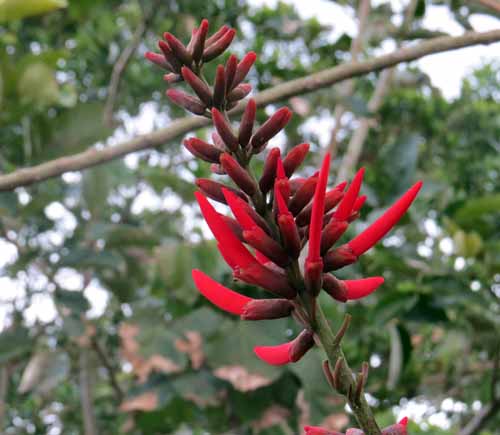
Red poro
- Erythrina lanceolata (Poró rojo in Spanish) – There are many other kinds of poró trees in Costa Rica, but they are mostly not native and do not attract as many kinds of birds as the poró rojo does. When our tree is blooming in the dry season it is covered with hummingbirds, Baltimore orioles, blue-gray tanagers, flame-colored tanagers, great kiskadees, and Tennessee warblers.
- Weeping bottlebrush tree (Callistemen viminalis: isopo in Spanish) – attracts hummingbirds and stingless bees.
- Mimosas – mimosa trees attract hummingbirds, Baltimore orioles, tanagers, Tennessee and other kinds of warblers, and stingless bees. The angel hair mimosa (Calliandra calathyrsus (cabello de angel in Spanish)) is especially good.
- Aguacatillo – This is a kind of wild avocado, with very small fruit. There are many different varieties. Resplendent quetzals love to eat the fruit. We have planted one, but since there are no longer quetzals in our area we don’t expect it to attract any (but, never say never).
- Cecropia (guarumo in Spanish) – stingless bees, sloths, and many kinds of birds
- Jocote – Birds and squirrels love to eat the flesh around the outside of its nuts.
- Guijarro or huevo de caballo (Stemmadenia littoralis) – its seeds attract many kinds of birds
- Tree tobacco (Acnistus arborescens; Güitite in Spanish) – attracts clay-colored thrushes and many kinds of fruit-eating birds. The bark is soft and spongy and is a great place to attach orchids.
- Colpachí (also called corpachí, and copalchí) (Croton niveus) – squirrels and crimson-fronted parakeets.
- Chayote – grayish saltators eat the tendrils and young tender fruit. Squirrels eat the young fruit.
- Dama (Citharexylum donnell-smithii, the locals where we live call it huelenoche) – produces long strings of orange berries that are popular with many kinds of birds.
- Tucuico (Ardisia revolute) – produces clusters of berries that are popular with many kinds of birds.
- Targuá (Croton draco) – a fast-growing pioneer species in the highlands which attracts crimson-fronted parakeets.
PORTERWEED AND A FEW OTHERS
Special mention needs to be made of porterweed (Stachytarpheta (rabo de gato, rabo de rata and many other common names in Spanish). I know of no other plant that attracts as many hummingbirds and butterflies as this one. It’s easy to grow and if watered during the dry season, blooms all year.
Fosforillo (Hamelia patens; also called coralillo in Spanish) is another excellent flower for hummingbirds, other kinds of birds and butterflies. It is a large bush or small tree that seems to come up spontaneously all over our property. We suspect the seeds are transported by birds that have eaten its small fruit.
Aloe vera (sábila), originally from North Africa, blooms profusely, attracts hummingbirds and also has medicinal values.
Penta (another one from Africa) attracts butterflies. Fuchsia triphylla, also known as honeysuckle fuchsia and firecracker fuchsia, is a prolific bloomer and attracts hummingbirds.
Many of the large heliconia species attract hummingbirds, tree frogs, and leaf frogs.
Last but not least is our climbing vine called Thunbergia mysorensis, which always seems to be covered with hummingbirds and Tennessee warblers.
Here are a couple of good web sites on gardening for wildlife:
- Gardening for Wildlife http://www.gardening-for-wildlife.com/
- Landscape for Life http://landscapeforlife.org/
If you do not take native plants and animals into your gardening strategy you will always have an uphill battle. If you garden with nature you can live more in harmony with the planet. It is more than just attracting birds, it is a different outlook on life.
